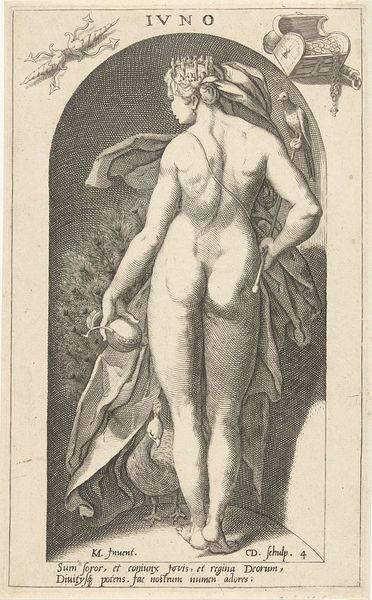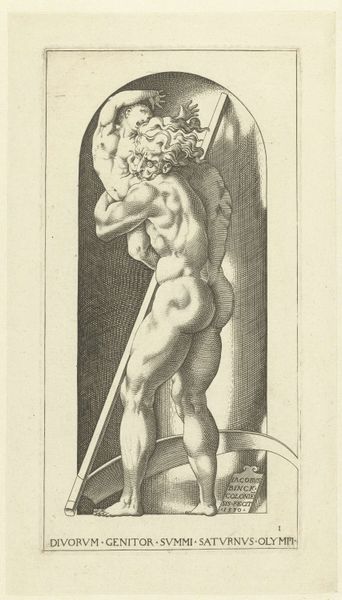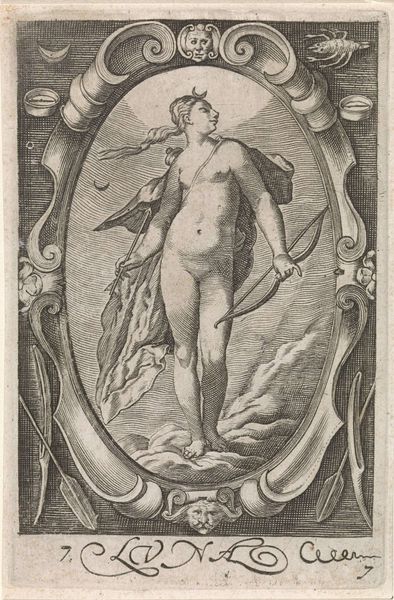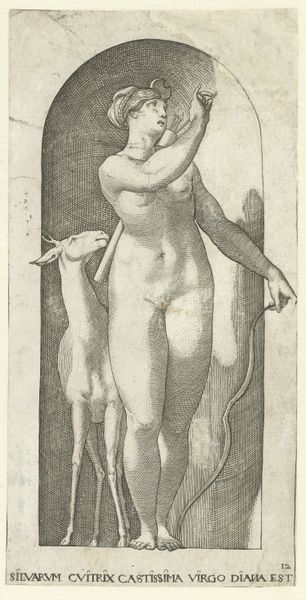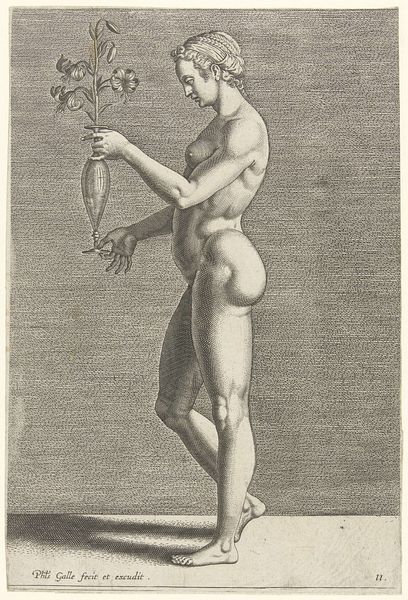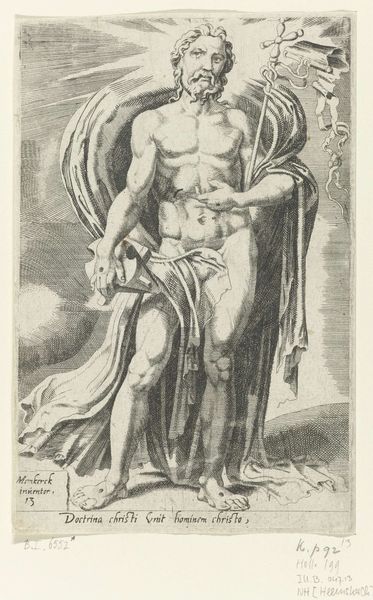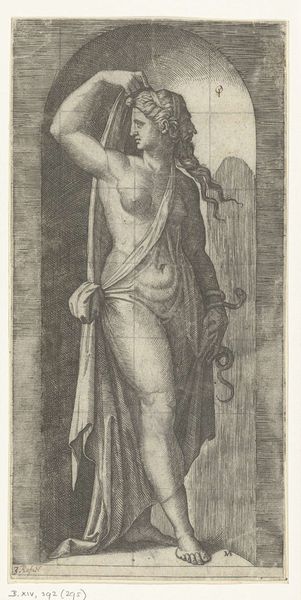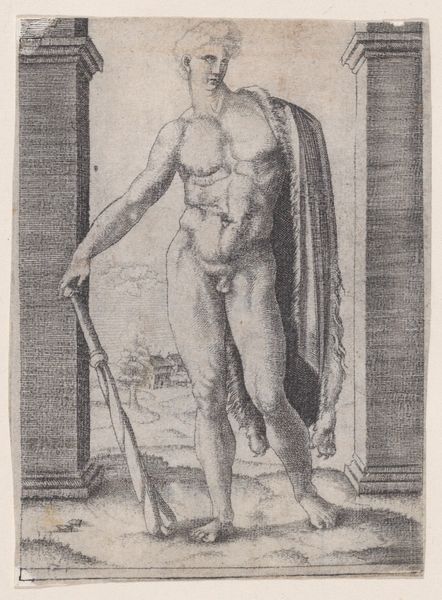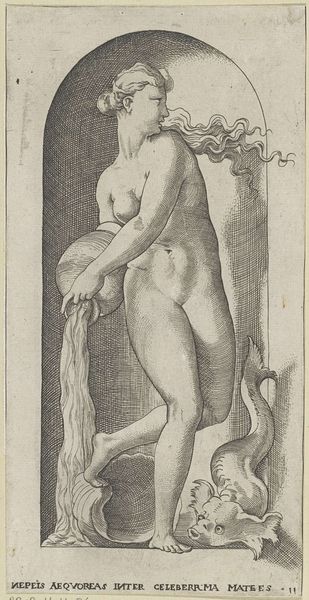
print, engraving
#
allegory
#
baroque
# print
#
old engraving style
#
classical-realism
#
figuration
#
history-painting
#
nude
#
engraving
Dimensions: height 208 mm, width 105 mm
Copyright: Rijks Museum: Open Domain
Curator: Here we have Hendrick Goltzius’ engraving, “Rechtvaardigheid,” or "Justice," likely created sometime between 1578 and 1709. It's currently held here at the Rijksmuseum. Editor: Striking! My first impression is the incredible detail achieved with engraving. The subject's muscularity and pose evoke a sense of both power and vulnerability. It seems like the artist put a great deal of work into capturing texture and luminosity. Curator: Goltzius was a master engraver, and you can see that technical skill at play. Look at how he uses the burin to create the illusion of light reflecting off the figure's skin and the metallic surfaces. The physicality of the engraving process itself – the labour, the tools, the inking – it all speaks to the construction of meaning. It also speaks of mass production in his time, this image would have been accessible. Editor: Absolutely. Thinking about that wider distribution speaks to how concepts of justice are being disseminated, debated and visualized in society. Notice the symbolism at work: a nude figure, perhaps representing impartiality, holds a sword in one hand and scales in the other. She stands firmly, grounded in an allegorical space, a representation of an ideal— but what system are we meant to apply this ideal to, what class of citizen does it favor, who is absent? Curator: It's fascinating to consider how an engraving like this was received then versus how we interpret it now. The act of engraving allows for precision and repetition. The lines that form the image become a method for the mass distribution and consumption of the visual trope. It's easy to forget that this was labor that, no doubt, contributed to systems of economy and access in the Netherlands during this time. Editor: Yes, and consider how the very notion of justice is interwoven with power dynamics. The subject, though nude, carries both instruments of judgment and enforcement: balance and power. Is this an invitation to consider fairness, or a warning of its consequences? To see it placed in conversation with our moment, what feels most just to you today and to whom does that apply? Curator: Looking closer at the production of "Rechtvaardigheid" reminds us to scrutinize the circumstances under which representations of ideals— like justice — are created and consumed, and how their meaning and impact can change through space and time. Editor: Thinking about this representation of Justice compels us to question: whose justice, and to what end?
Comments
No comments
Be the first to comment and join the conversation on the ultimate creative platform.

